5 great exercises to make you a better hill runner
Our expert guide to five simple strength-building exercises you can do at home, or the gym

If you want to get better at hill running, the advice is to do more hill running. That’s a given because the more you perform an activity, with a good quality training plan as well as focus and purpose, the more likely you are to improve.
It is also a good idea to consider some speed work, such as hill reps. On top of this, there are some strength and conditioning exercises that should lead to improved performance as a hill runner, as well as helping you to avoid potential niggles and injuries.
We asked a sports and exercise expert to recommend five of the best exercises to make you a better hill runner.
5 exercises to make you a better hill runner
Chris Allsobrook, a personal trainer at OriGym, suggests his five top exercises for hill runners. The benefit of these exercises is they can be done at home, or at the gym, depending on what suits you best.
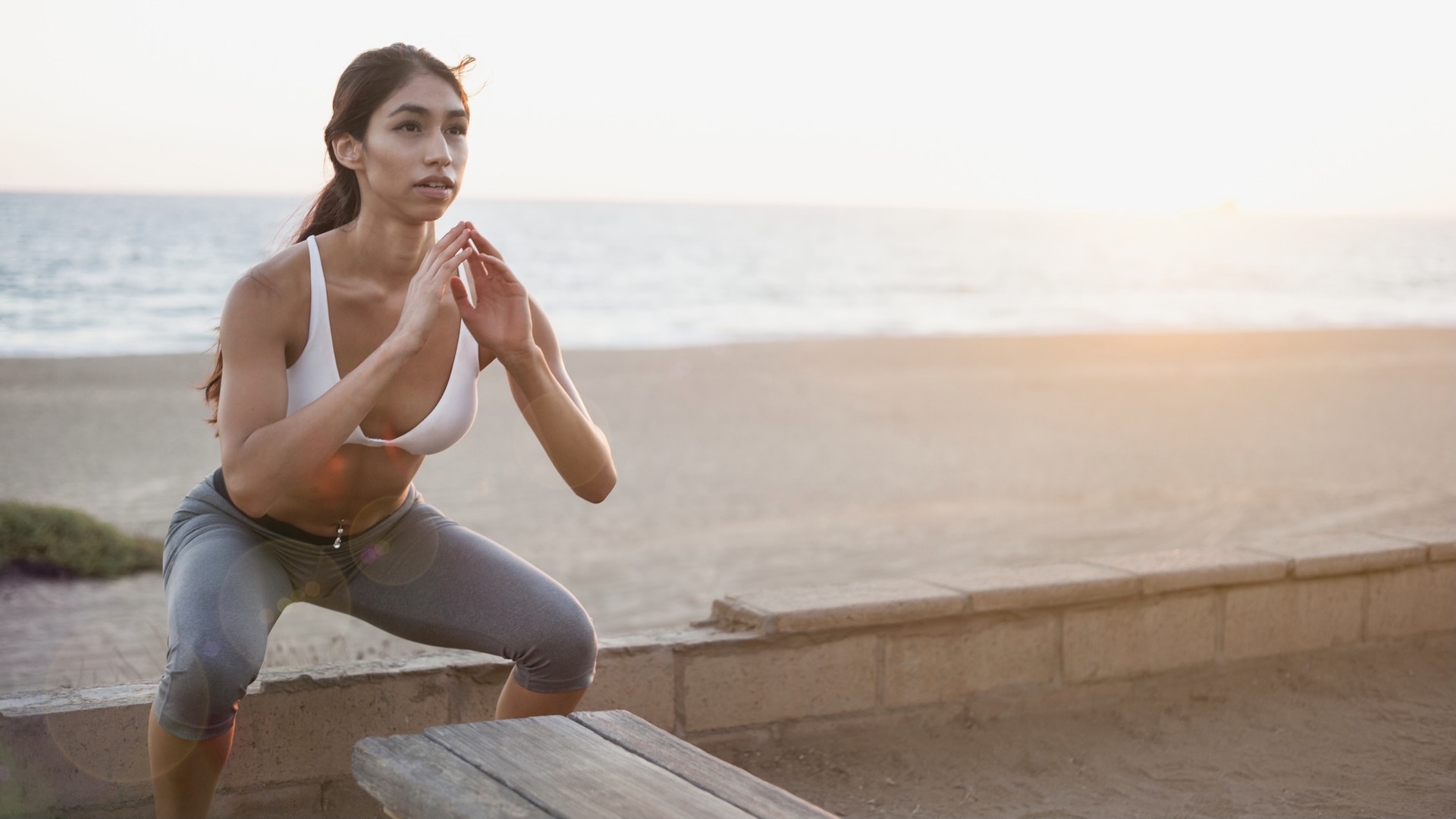
1. Squats
According to Allsobrook, the squat, which is a mainstay of many gym routines, offers huge benefits for hill runners. He says: “Squats strengthen the glutes, quads and calves, providing significant muscle gain, as well as being a great way to condition your legs for the next big climb.”
To perform a squat, stand upright with legs positioned a little over shoulder-width apart. Ensure your back is straight and your chest is facing forwards and upwards and then start to bend at the knees. Lower yourself down, like you would if sitting down on a chair.
Once your thighs are parallel with the ground, you should push upwards through your heels and engage your butt muscles, too, until you are standing straight again.
Advnture Newsletter
All the latest inspiration, tips and guides to help you plan your next Advnture!
Allsobrook suggests that for hill runners who are already accustomed to squats, you can add in a hold at the lower point of the squat, or else do some small pulses up and down where you most feel the power of the squat, for an additional challenge.
Another progress for the squat, to make it harder, is to utilise hand-held weights or hold a kettlebell at your chest.
At the outset, you could do 10 to 15 squats, two to three times over, with rest in between.
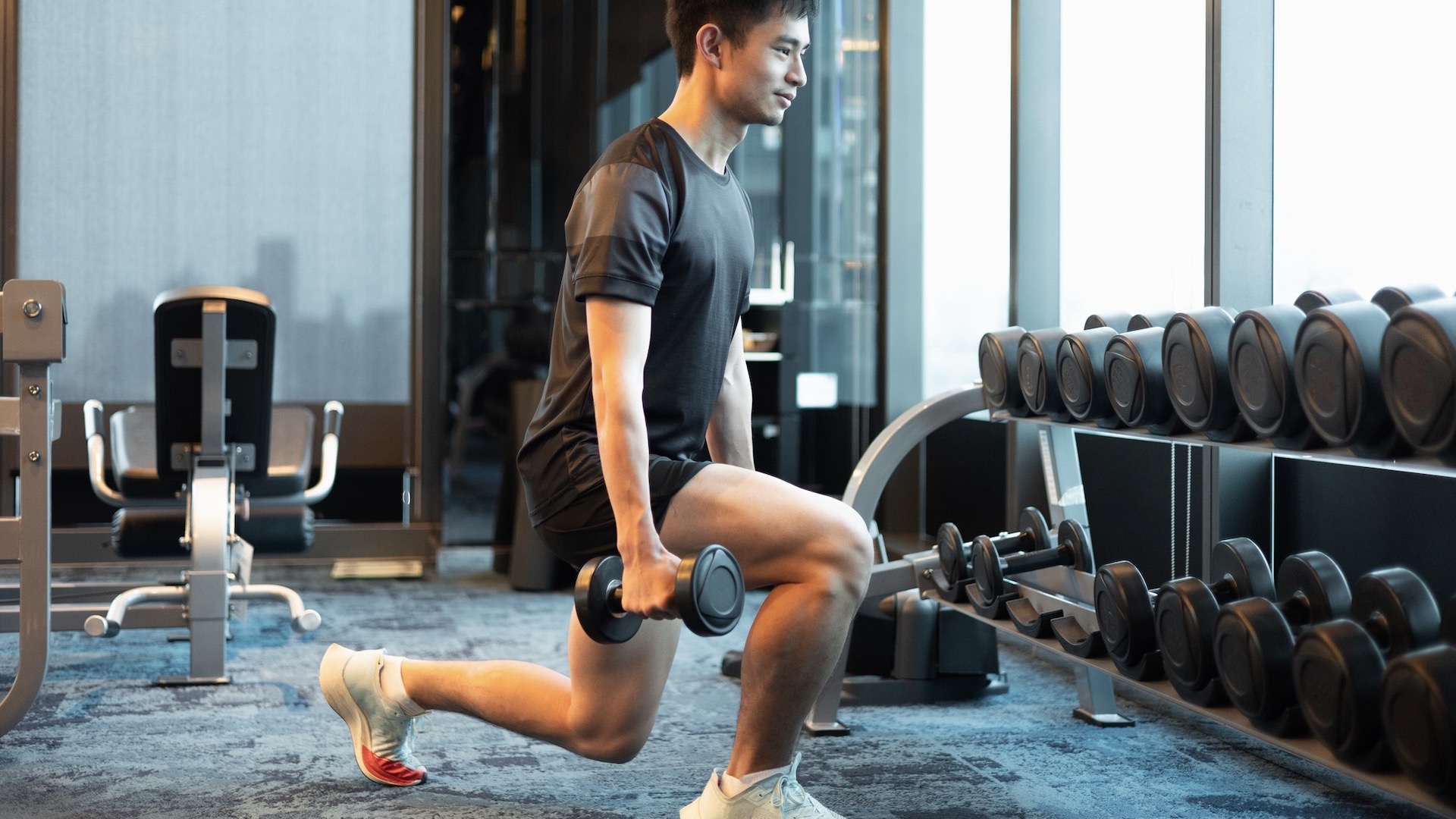
2. Weighted lunges
Allsobrook says: “Arguably one of the most deceptively simple exercises, lunges work the glutes, quads and the hamstrings, which are all important for strong hill running. Lunges offer additional strength and reach to every stride.”
To perform a lunge, stand upright with your legs shoulder-width apart. Take a large step forward on one leg while making sure your back is straight and your chest is up and forwards.
When your foot lands flat on the ground, you will naturally bend the back knee to accommodate the step forwards. It is important your front knee doesn’t go further forward than the toes of that foot. Aim for a 90-degree angle in both knees.
Next, the aim is to push off from the front leg to drive yourself back to standing upright. Use your quad and glute to achieve this, as well as engaging your core muscles. Then repeat on the other side.
At the outset, you could do 10 to 15 lunges both side, two to three times over, with rest in between.
Allsobrook suggests how you can add progress to the lunge for more strength benefits for hill runners. “I’d suggest adding in weights to either side, too, as this not only builds on all the benefits runners get from lunges, but you’re working your obliques too," he says. "This is an area that’s often overlooked in our workouts, but this offers an extra boost to your run.”
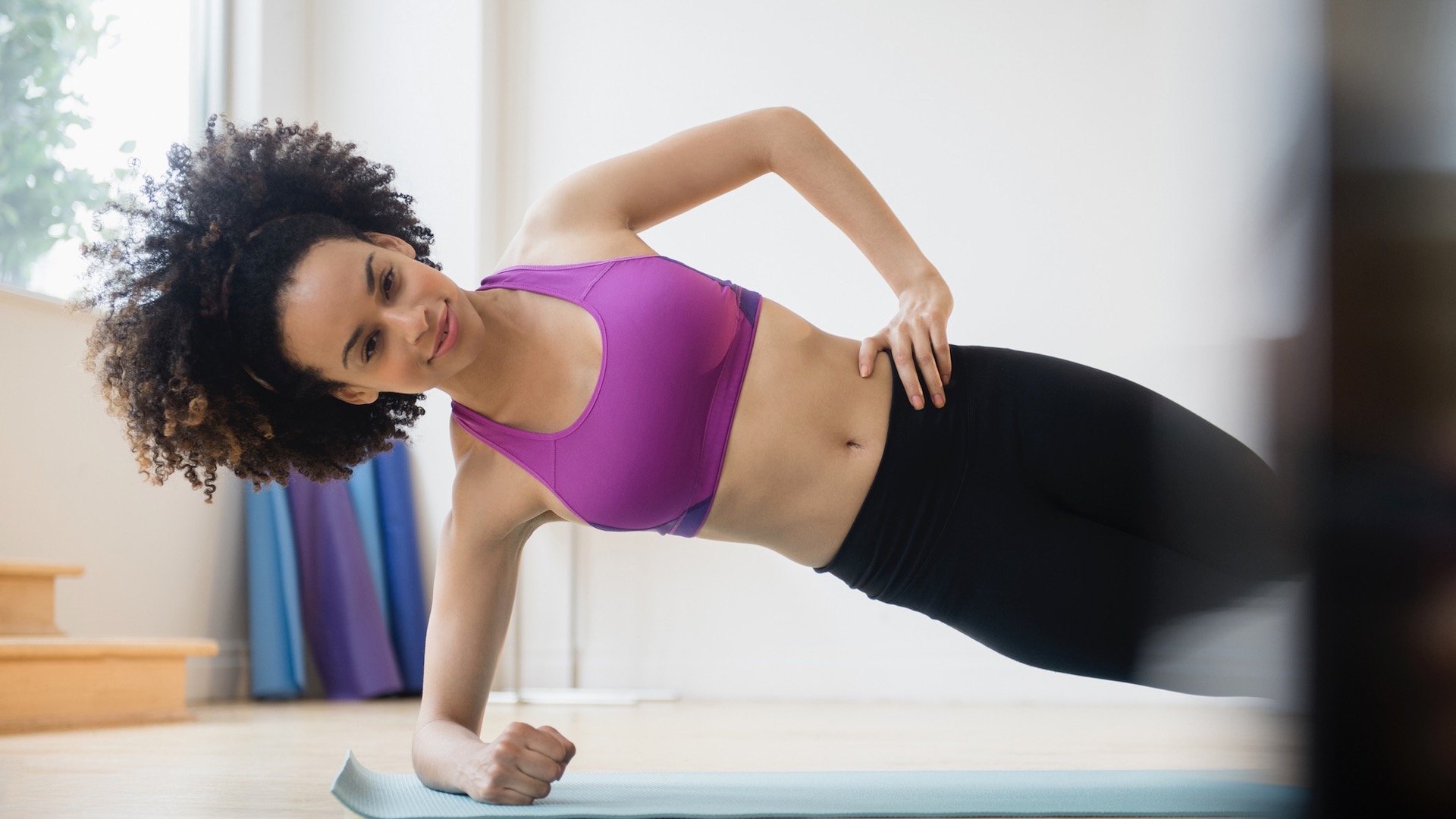
3. Side plank
A side plank is a variation on the more traditional plank, but it targets the obliques, as well as strengthening the core and shoulder muscles. A strong core is important for runners.
“The obliques can be tricky to strengthen but they are vital for good posture and hill running," says Allsobrook. "A side plank helps to target the important obliques."
To do a side plank, lie on your right side with your legs straight and feet on top of each other. It's a good idea to be on a fitness mat or carpet.
Next, place an elbow under the shoulder with the forearm pointing away from you and the hand lightly balled into a fist or flat on the ground.
Keep your neck in a neutral position and then brace your core and lift your hips off the ground. Support your weight on your elbow. Hold for 15 to 30 seconds and then report on the other side.
You can build up the length of time you hold the side plank for as you become stronger. For progression, try lifting your top leg while holding the side plank, or perform the side plank with your lower arm straight below your shoulder rather than bent at the elbow.
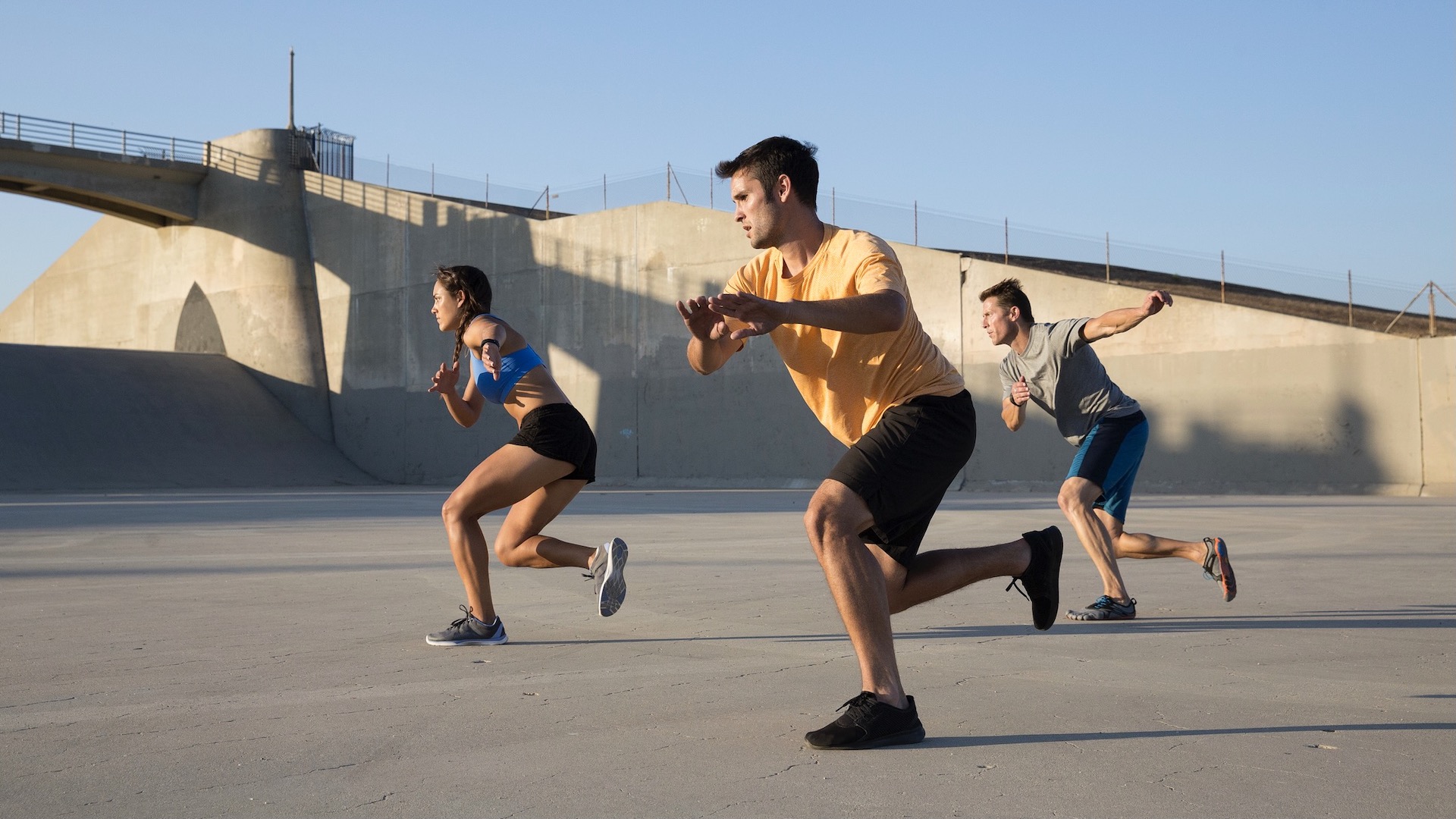
4. Speed skaters
“Skating and running often go hand-in-hand, with many mirrored movements," Allsobrook says. "By including speed skaters as part of your exercise workout routine you will strengthen key flexors and areas of strain, such as the core, calves and glutes.
“Add in a small weight on each side to really test this – and work out your obliques and adductors even further.”
To perform the speed skater exercise, you will be upright with knees bent and your back leaning forward. You should aim to leap from side to side on alternating feet. Stay on the balls of your feet and swing your back foot behind the standing leg, but without letting your toes touch the floor.
Use your your arms – by pumping them – to propel your jumps. Keep your back as straight as possible.
Aim to do the exercise for 30 seconds or a minute, and repeat. Rest in between. You can build up the number of repeats of this exercise that you do, as you strengthen your muscles.
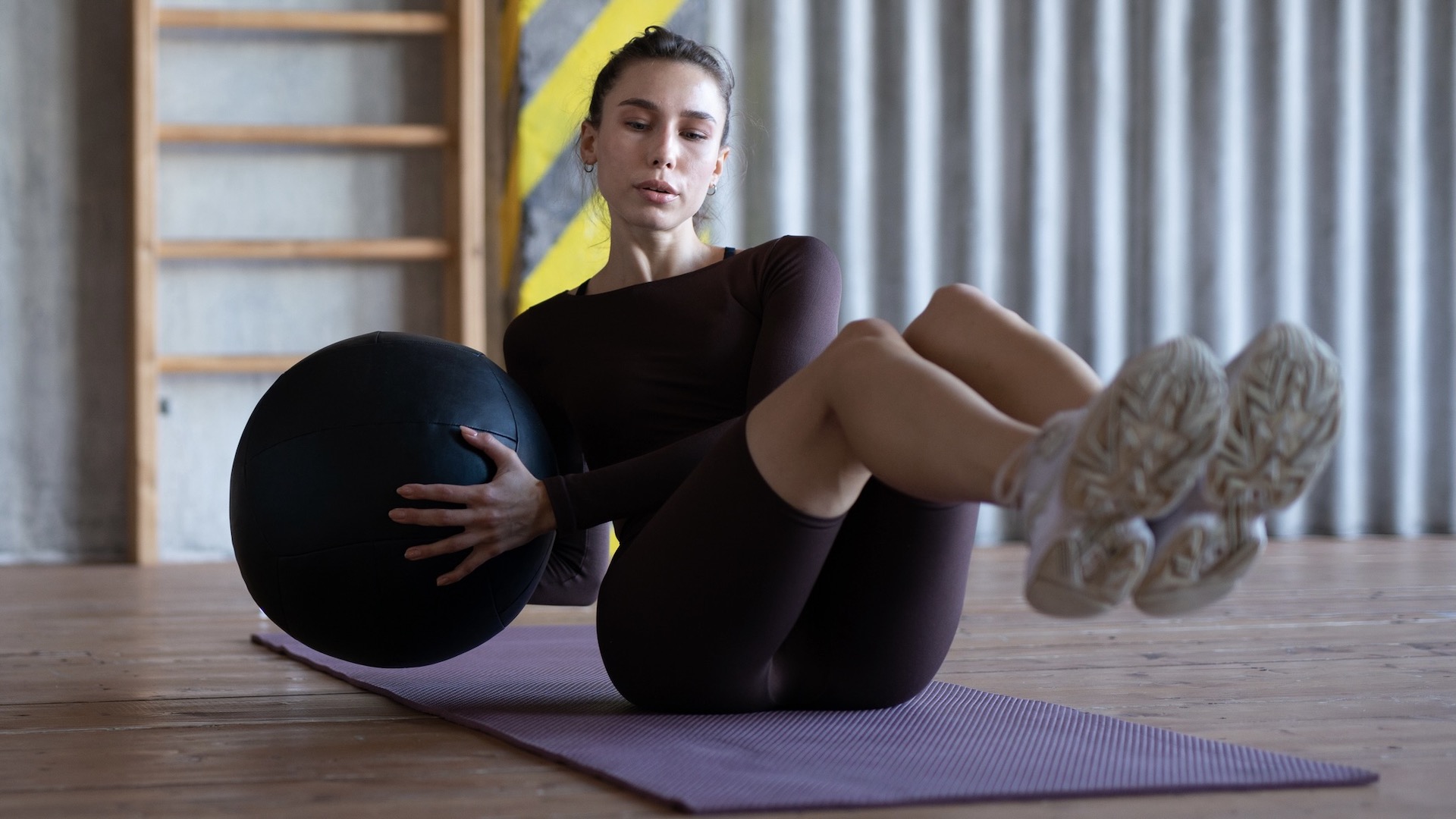
5. Russian twists
Allsobrook says another exercise to make you a better hill runner is the Russian twist. “The Russian twist acts as a canvas to build on and offers a way to push the limits of the key muscles you need for running.
“While the basic twist provides substantial benefits for the core and obliques, adding in a punch to the top of the movement stretches the arms and shoulders, whereas including a weight – like a medicine ball – compounds those benefits for the core.”
To do a basic Russian twist, sit on the floor and press your feet into the ground and then extend them out, probably bent, with your feet just off the ground.
Lean back, but not so much that you lose your balance. You will be balancing on your sit bones.
The aim is to engage your core and back muscles. Then, while keeping your chest up and your back straight, twist your arms and shoulders from one side to the next.
Keep your arms parallel to the floor as you twist, or reach down to tap the floor beside you. It helps if your eyes follow your hands.
For more stability, you can cross your lower legs.
To progress the twist, you can hold a weight in both hands or a medicine ball and use that to twist with. Or, you can do a small punch movement at the extent of each twist.
A repetition is from one side to the next. Aim to do 10 reps, two to three times with a rest in the middle.
Hill runners will benefits from a couple of workout sessions a week including the above strength-building exercises.
- Best trail running shoes: footwear for speed on technical terrain

Fiona Russell is a widely published adventure journalist and blogger, better known as Fiona Outdoors. She is based in Scotland and is an all-round outdoors enthusiast with favorite activities including trail running, mountain walking, mountain biking, road cycling, triathlon and skiing (both downhill and backcountry). Aside from her own adventures, Fiona's biggest aim is to inspire others to enjoy getting outside and exploring, especially through her writing. She is also rarely seen without a running skort! Find out more at Fiona Outdoors.
